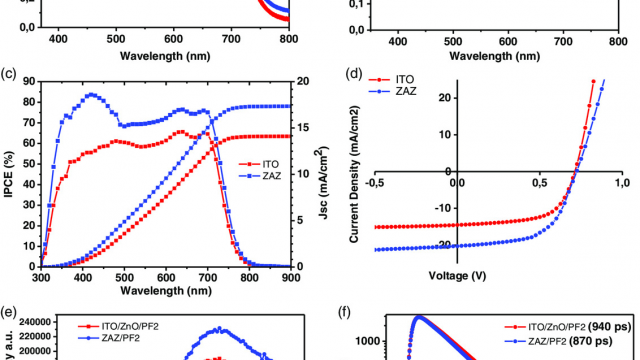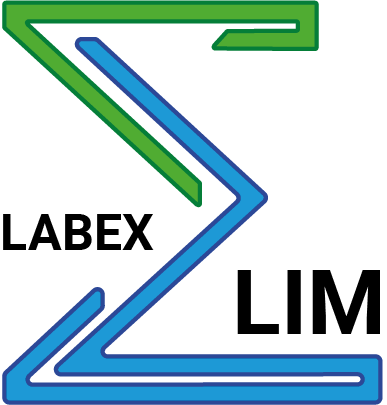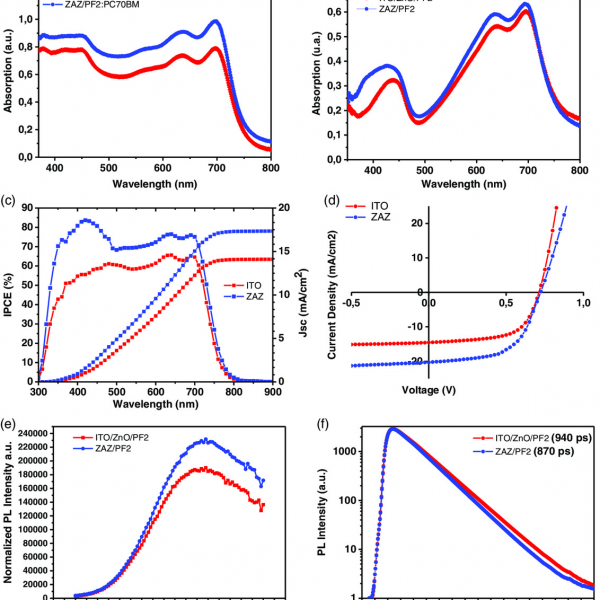
[Publication] Silver Nanowire Electrodes Integrated in Organic Solar Cells with Thick Active Layer Based on a Low-Cost Donor Polymer
Silicon-based solar cells largely dominate the photovoltaic industry, accounting for over 95% of the global market. However, their manufacturing process is energy-intensive due to the need to use silicon in an ultrapure form derived from silica, leading to a high energy footprint, despite today’s low costs linked to large-scale production dominated by China. This is why more and more new technologies are being studied to reduce the cost of solar cell manufacture. In recent years, organic solar cells, using low-cost printable polymers and molecules, have become very attractive for research due to their advantages such as reduced energy footprint, flexibility, ease of integration and non-toxicity.
Moreover, a significant fraction of the energy and cost spent on manufacturing organic solar cells is associated with the transparent electrode, which is generally based on indium-tin oxide (ITO). The manufacture of ITO requires a high-temperature vacuum deposition technique, and indium is a rare material, difficult to extract and produced in low volumes on a global scale. It is therefore necessary to develop alternative solutions.
Against this backdrop, teams of researchers from the XLIM Institute in Limoges and the ICPEES (Institut de Chimie et Procédés pour l’Energie, l’Environnement et la Santé) in Strasbourg have been working on the development of silver nanowire electrodes (AgNW) integrated into organic solar cells, which represent one of the best alternatives to ITO thanks to their excellent electrical, optical and mechanical properties. This project, which was supported by LABEX ∑-LIM, demonstrated that incorporating silver nanowires between two layers of ZnO nanoparticles (ZnONP) results in transparent electrodes with optical and electrical performance superior to ITO.
XLIM researchers developed a ZnONPs/AgNWs/ZnONPs electrode architecture, which they combined with a reference organic active layer (PF2:PC70BM), to demonstrate efficient organic photovoltaic components… This demonstrated the enhanced optical absorption of the active layer, linked to the excellent transparency of the nanowire electrode. Through plasmon resonance phenomena, highlighted by optical spectroscopic measurements, an improvement of around 20% in photocurrent and overall cell power conversion efficiency was observed compared with the ITO-based reference.
Finally, the components obtained show excellent reproducibility. It has thus been demonstrated that silver nanowire-based electrodes are a promising alternative thanks to their excellent optical, electrical and mechanical properties: transparency, conductivity and flexibility. They have the potential to address numerous applications in a wide range of fields, such as light detection and emission (photodetectors, energy conversion, light-emitting diodes for lighting or display, and so on).
Figure: a) Absorption spectra of the active layer with ITO and ZAZ electrodes; b) Absorption spectra of a thin 35 nm layer of PF2 on ZAZ and ITO/ZnO; c) IPCE spectra of organic solar cells with ITO and ZAZ electrodes and associated calculated current under AM1. 5G (ZAZ: 17.33 mA cm-2 ; ITO: 14.09 mA cm-2); d) J(V) curves of organic solar cells with ITO and ZAZ electrodes; e) PL spectra of PF2 on ITO and ZAZ electrodes; f) TRPL spectra of PF2 on ITO and ZAZ electrodes. The excitation wavelength is 377 nm for PL and TRPL; we have also performed a deconvolution that includes the equipment response.
About the publication
Journal: RRL Solar – Volume 7, Issue 2
Date of publication: January 2023
Authors: Issoufou Ibrahim Zamkoye (XLIM Research Institute, UMR 7252 CNRS/University of Limoges, Limoges, France), Johann Bouclé (XLIM Research Institute, UMR 7252 CNRS/University of Limoges, Limoges, France), Nicolas Leclerc (Institute of Chemistry and Processes for Energy, Environment and Health (ICPEES), UMR 7515 CNRS/University of Strasbourg, Strasbourg, France), Bruno Lucas (XLIM Research Institute, UMR 7252 CNRS/University of Limoges, Limoges, France), Sylvain Vedraine (XLIM Research Institute, UMR 7252 CNRS/University of Limoges, Limoges, France)
Link: https://onlinelibrary.wiley.com/doi/10.1002/solr.202200756



